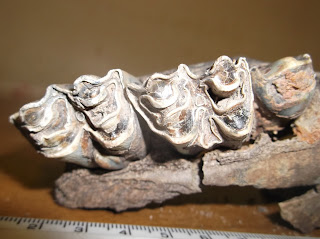I excavated this piece along side Bos & Cervid bones I first thought it just to be a domestic pig skull, I now know it to be from a wild boar. This piece as with all other finds on this blog was reported to http://www.teesarchaeology.com/ with no response ! I can find no other record of wild boar fossils being excavated in the south west of Cleveland.
http://historyofabeck.blogspot.co.uk/2013/04/stainsby-ancient-lake-bed-excavated.html
http://historyofabeck.blogspot.co.uk/2013/04/stainsby-ancient-lake-bed-excavated.html



























 10 - This image show modern red deer antlers.
10 - This image show modern red deer antlers.



























